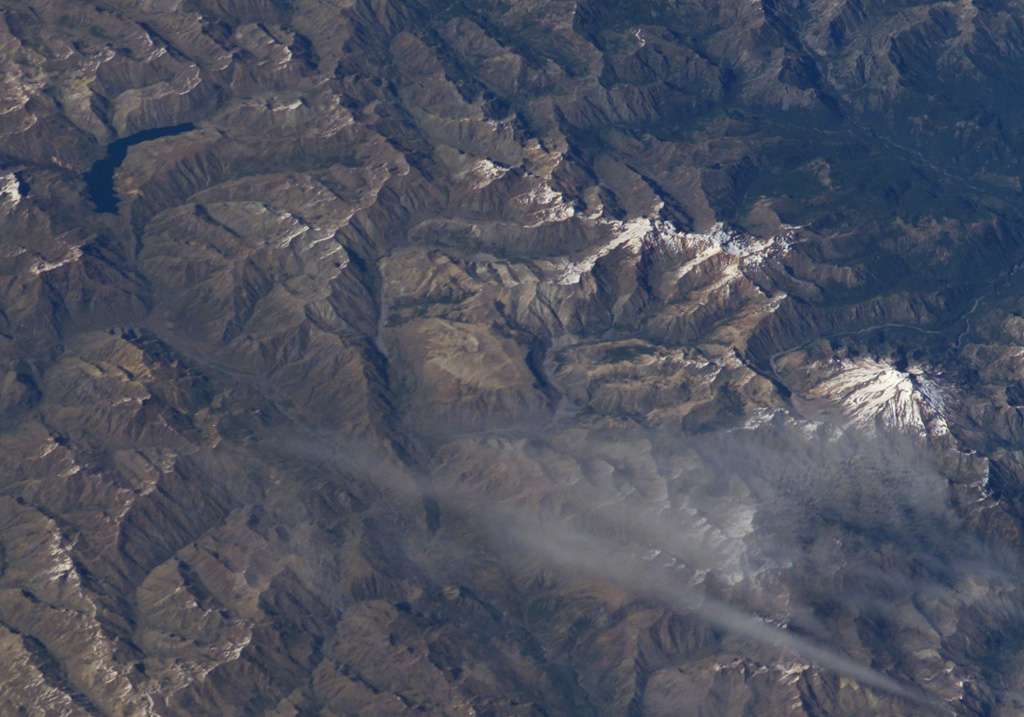Image GVP-11456

The small light-brown area at the center of this NASA International Space Station image (with north to the bottom right) is Volcán Lomas Blancas. This small shield-like 2268-m-high stratovolcano of late-Pleistocene to Holocene age is located about 15 km SE of snow-capped Nevado de Longaví volcano (right-center). A 2.3-km-wide caldera, possibly formed by edifice collapse, can been seen opening to the SE. Pumice deposits probably originating from Nevado de Longaví blanket the volcano. The crescent-shaped lake at the upper left is Laguna del Dial.
NASA International Space Station image ISS008-E-7432, 2003 (http://eol.jsc.nasa.gov/).
![]() This image is made available as a Public Domain Work, but proper attribution is appreciated.
This image is made available as a Public Domain Work, but proper attribution is appreciated.

Lomas Blancas
